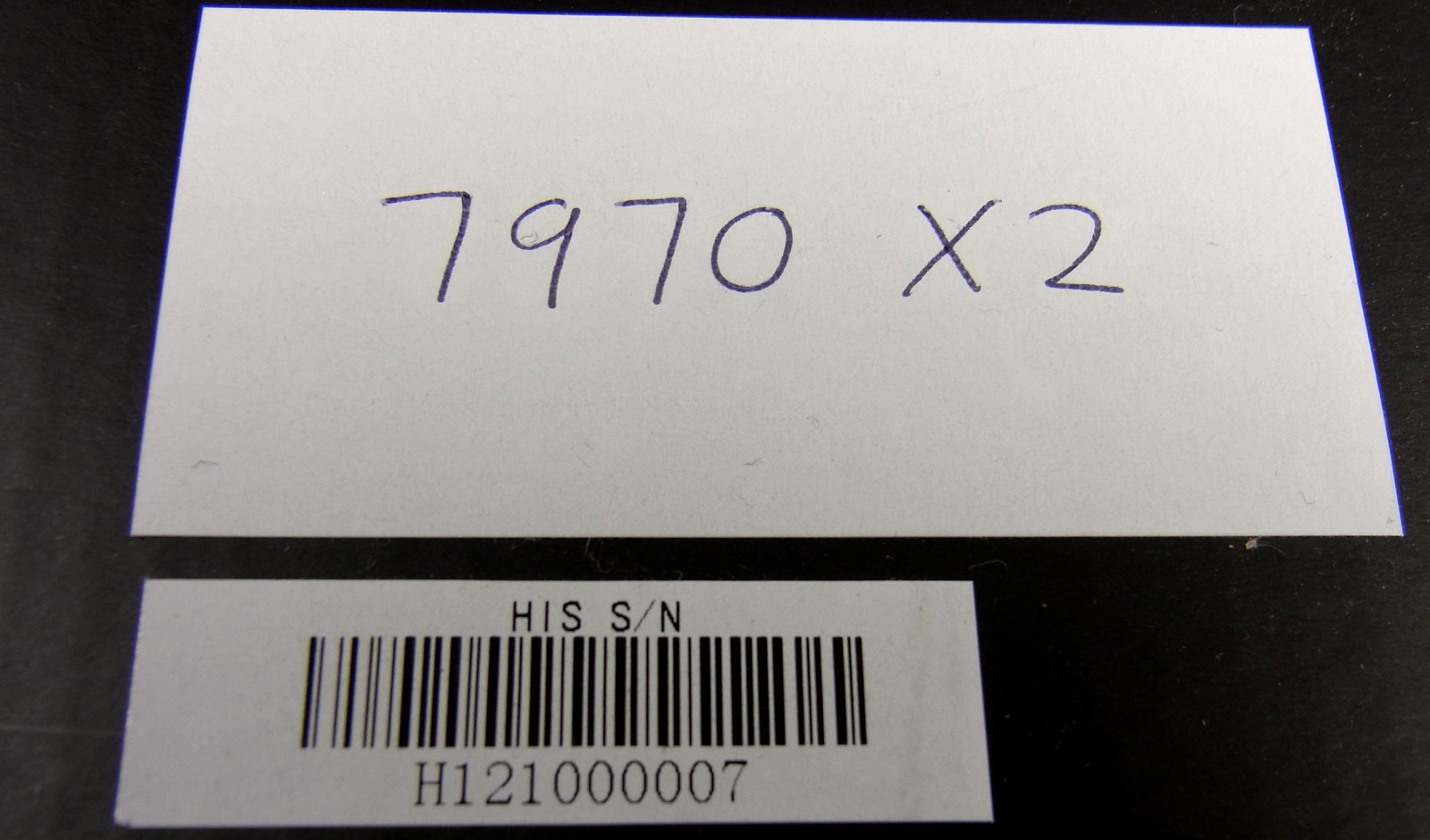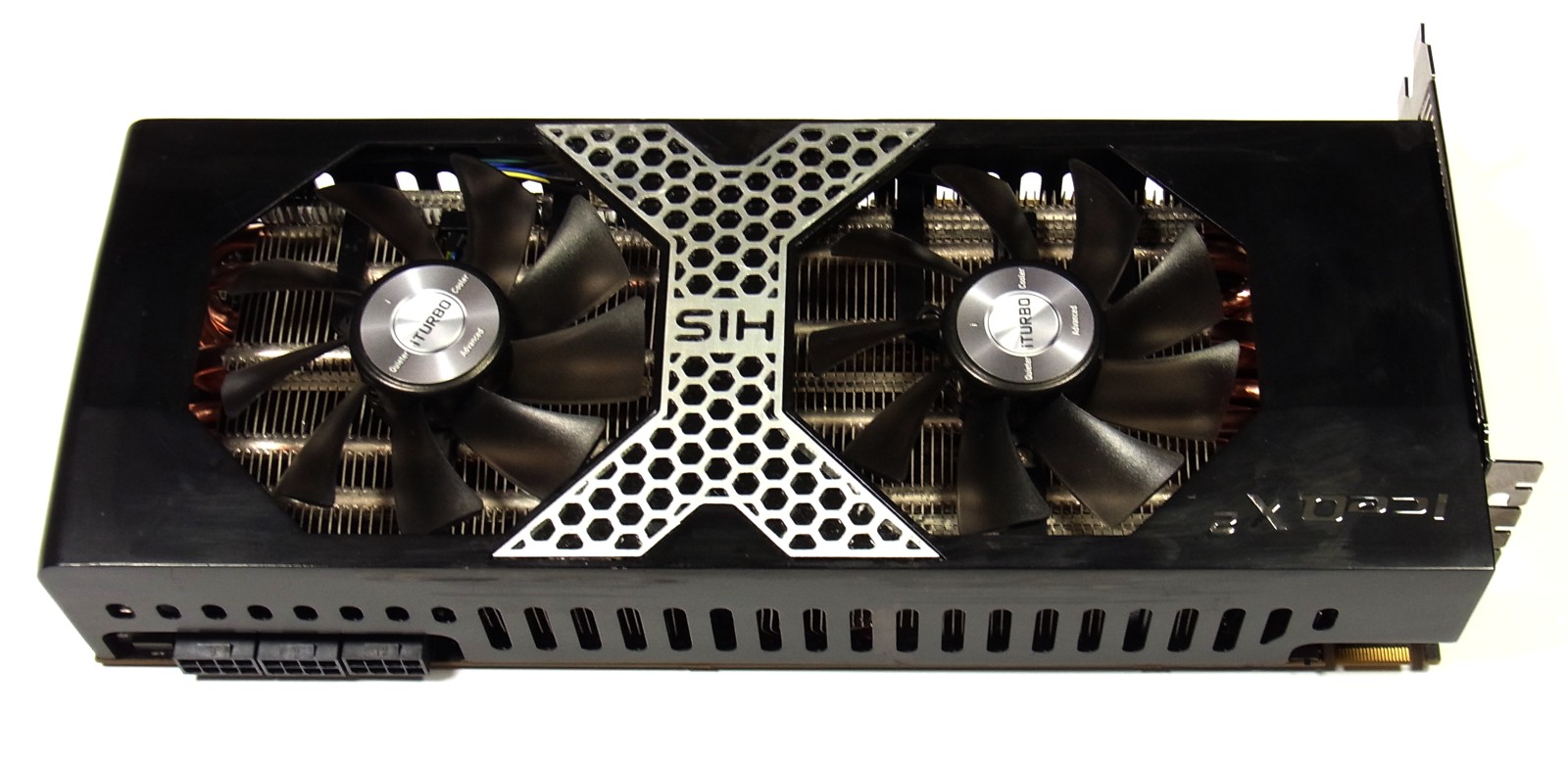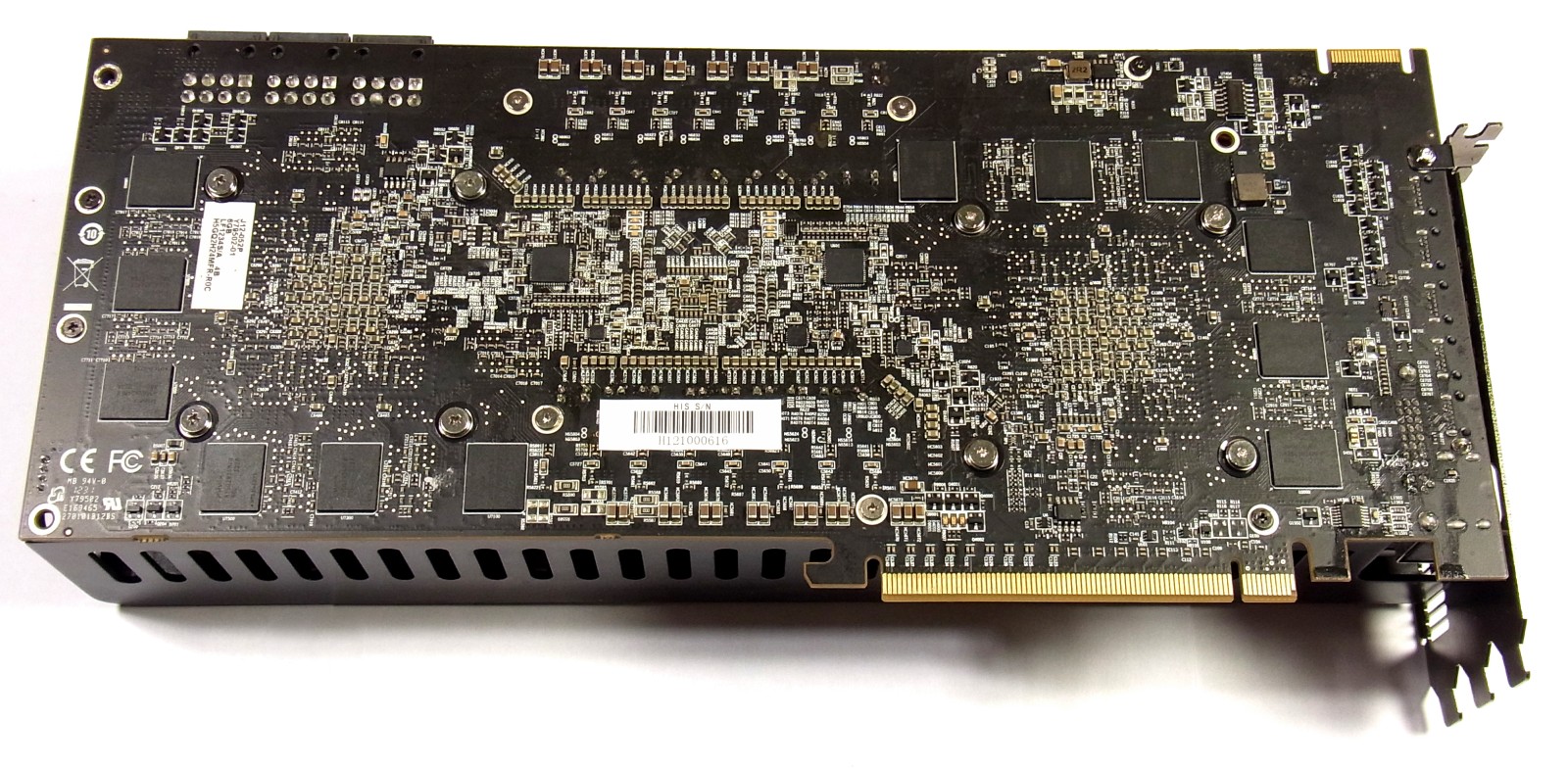Radeon HD 7990 And GeForce GTX 690: Bring Out The Big Guns
EVGA recently lent our German lab one of the GeForce GTX 690s we've had in the U.S. for months. The purpose? To pit against HIS' upcoming 7970 X2 and PowerColor's Devil13 HD7990, both dual-Tahiti boards vying to become the world's fastest graphics card.
HIS 7970 X2: The Challenger
HIS 7970 X2: Can It Become The New King?
We first contacted HIS about its 7970 X2 during Computex, earlier this year, and followed the card's development after that. After beta testing a an early sample with the serial number of 7, we now have a production-ready card with the number 616. This is the version you should be seeing for sale soon, so we can finally share it with you.
Our card has the same technical specifications and features as the final version, except for its somewhat-makeshift plastic cover.
The black box containing the 7970 X2 is similar to what we've received other HIS cards in, so it should also be pretty close to the final version.
HIS is employing a controversial triple-slot design, which consumes quite a bit of expansion space. The idea would be that a card like this one would save you from having to buy two dual-slot boards in CrossFire, yielding a net gain of one slot, though.
More room to work inside gave HIS' engineers space to address cooling aggressively. Note the two 95 mm fans centered right above the Tahiti GPUs.
Up on top of the 7970 X2 you find three eight-pin power connectors. Each of those inputs is able to provide up to 150 W, necessary (and still not enough) to satisfy the card’s massive power requirements.
Get Tom's Hardware's best news and in-depth reviews, straight to your inbox.
A look at the bare board shows us that HIS split up the power supplies for each GPU, separating them on the PCB. PowerColor does not do this on its own design.
What the HIS and PowerColor boards do share in common, however, are six power phases for each GPU and two phases for each 3 GB bank of GDDR5 memory. HIS uses Magic R30 coils on its implementation, leading to less coil whine. This is a much bigger issue for the competition, unfortunately.
HIS takes a unique approach to cooling. Instead of using one large heat sink across two GPUs, the company deploys two separate coolers. Each sits on top of its own GPU, and is controlled independently.
The way this card was designed, its heat pipes run horizontally, while the cooler's fins are oriented vertically. We don't like this. Half of the heat blown through the sinks ends up on the motherboard. The other half gets blown out of the card's top. There are corresponding advantages, of course. Since heat isn't blown out the back of the board, your hard drives don't receive the brunt of the exhaust. More than likely, HIS expects its 7970 X2 to end up in chassis with side fans, but we aren’t so sure we agree.
The visible dent you see in the shroud is there on purpose, due to a capacitor that was in the way. Our newer version of the card (the one that we benchmarked) doesn't have this dent.
The 7970 X2’s two GPUs are connected to a Lucidlogix LT22102, a 48-lane switch configured into one 16-lane upstream port and two 16-lane downstream ports. Unfortunately, it's limited to PCI Express 2.0 signaling. As a result, the PCI Express 3.0-capable Tahiti GPUs are forced back to second-gen transfer rates. Do we see this as an issue? Not really. Modern graphics processors still don't fully saturate a 16-lane PCIe 2.0 link.
Although our benchmark sample isn't representative of the final retail 7970 X2, it's fully functional. Once HIS has more to tell us about its official launch date and pricing information, we'll pass that information along.
Current page: HIS 7970 X2: The Challenger
Prev Page Radeon HD 7990 And GeForce GTX 690 Duke It Out Next Page EVGA GeForce GTX 690: Elegance, Illustrated
Igor Wallossek wrote a wide variety of hardware articles for Tom's Hardware, with a strong focus on technical analysis and in-depth reviews. His contributions have spanned a broad spectrum of PC components, including GPUs, CPUs, workstations, and PC builds. His insightful articles provide readers with detailed knowledge to make informed decisions in the ever-evolving tech landscape
-
mayankleoboy1 IMHO, the GTX690 looks best. There is something really alluring about shiny white metallic shine and the fine metal mesh. Along with the fluorescent green branding.Reply
Maybe i am too much of a retro SF buff :) -
Ironslice What's the most impressive is that the GTX 690 was made by nVidia themselves and not an OEM. Very nice and balanced card.Reply -
thanks for the in depth analysis with adaptive V-sync and radeon pro helping with micro stutter.Reply
not to take away anything for the hard work performed; i would have liked have seen nvidia's latest beta driver, 310.33, included also to see if nvidia is doing anything to improve the performance of their card instead of just adding 3d vision, AO, and sli profiles. -
RazorBurn AMD's Dual GPU at 500+ Watts of electricity is out for me.. Too Much Power and Noise..Reply -
mohit9206 2 670's in sli is better than spending on a 690 and 2 7950's in Xfire is better than spending on a 7990. this way you save nearly $300 both waysReply










